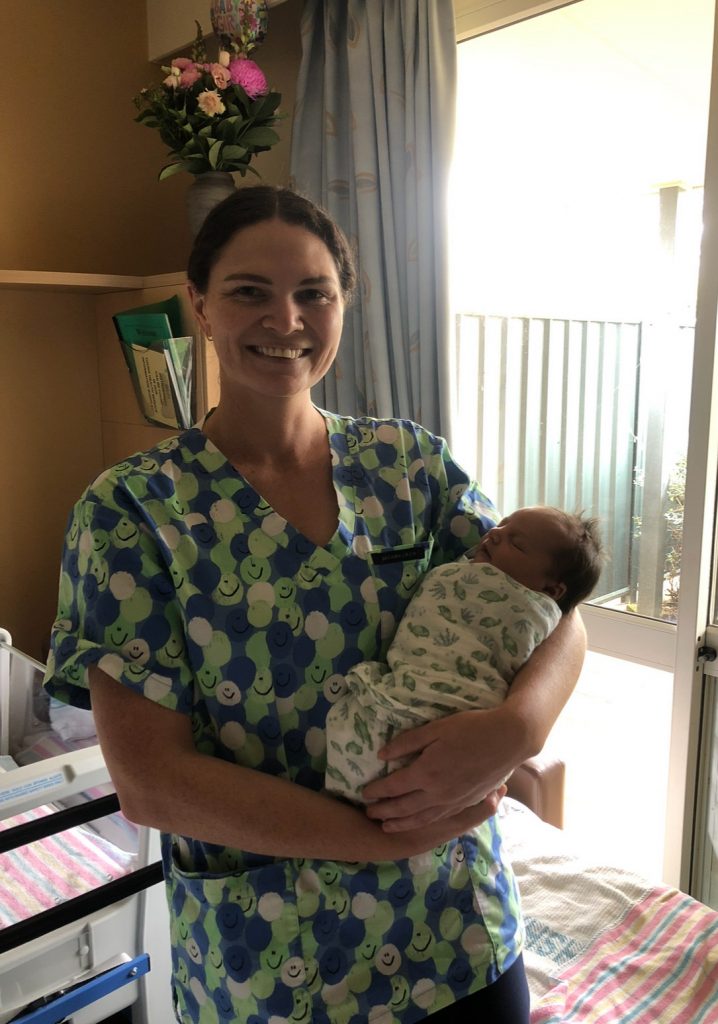Imagine a career where you get to help bring life into the world. To help people as they start or grow their family. To support mothers on their childbirth journey. Could there be a more rewarding job than being a midwife?
But how do you become a midwife in Australia? Let’s break it down for you. We’ll cover:
- What does a midwife do?
- How do you become a midwife?
- How long does it take to become a midwife?
- What skills does a midwife need?
- How much can I earn as a midwife?
- Next steps
What does a midwife do?
Midwives work to support and provide continuity of care for pregnant women across three stages: antenatal, intrapartum and postnatal care. Antenatal care involves looking after mothers during their pregnancy. You’ll monitor the health of the mother and the development of the baby, while offering information about birth settings such as birthing centres, home births and hospital deliveries. Then comes intrapartum care where you’ll be there during the birth itself, helping the mother through labour, assisting with pain relief and working alongside the doctor. And then you provide postnatal care. This involves monitoring the mother and baby in the time after the birth, ensuring the baby is healthy and breastfeeding correctly and delivering essential care for newborns in those crucial early days. Throughout all the phases, you’ll provide guidance, reassurance and care for mothers, babies and their families.
You will most likely work as a midwife in a hospital. However, there may also be career opportunities in private practices, community health services, group practices or clinics.
It’s a job that offers a lot of variety, the chance to meet and help many different people, and the opportunity to play a part in one of the most significant moments in their lives.
How do you become a midwife?

There are four steps to becoming – and staying – a midwife. They are:
- Gain a bachelor’s degree in nursing to become a registered nurse
- Study a diploma of midwifery
- Get registered
- Undertake professional development each year.
The practice of midwifery is a highly specialised area of nursing that requires a strong foundation in nursing skills, as well as specific midwifery skills. As such, you need to complete two degrees.
A Bachelor of Nursing1 is the ultimate foundation in nursing skills and knowledge. During your course, you get lots of practical experience through work placements in hospitals and other healthcare organisations – at Charles Sturt, you do more than 800 hours of hands-on experience during your degree. Plus, our nursing and midwifery courses are fully accredited by the Australian Nursing and Midwifery Accreditation Council (ANMAC), so you’ll graduate with qualifications that are recognised across Australia.
Once you graduate from your bachelor’s, you could go straight into a Graduate Diploma of Midwifery. Alternatively, you could work as a nurse to get experience and then do your diploma after you’ve been working for a while.
With your two qualifications in the bag, you then apply to the Nursing and Midwifery Board of Australia to register as a midwife. To maintain registration, you need to do 20 hours of professional development activities each year. This could include things like attending lectures or conferences, or running training sessions at your workplace.
Eleanor’s nursing journey
We caught up with Charles Sturt nursing alumni, Eleanor Mullany, about her inspiring journey – from starting as a registered nurse to becoming a midwife and making a difference in the Northern Territory.

Why did you want to become a nurse?
I wasn’t sure what I wanted to do after school, so in year 11, I completed a week of work experience at Young District Hospital, where I had the opportunity to shadow both nurses and midwives. I vividly remember spending a day with a registered nurse and midwife. Her confidence, competence and compassionate care made a lasting impression. I left that day feeling inspired and with a newfound certainty that I wanted to pursue a career in nursing.
Why did you choose to study midwifery with Charles Sturt?
The scholarship I received to study midwifery was offered through Charles Sturt University. I was already familiar with it and confident in what it would offer. I had previously completed my Bachelor of Nursing through Charles Sturt and had a really positive experience, so I was happy to return.
As someone who grew up in the country and always envisioned working in a rural setting, I appreciated the university’s strong focus on supporting rural communities. I also valued being able to study and attend intensive schools close to home and in a supportive environment, which Charles Sturt made possible.
What does a typical day look like for you in your role?
I am currently working at Royal Darwin Hospital as a new graduate midwife. So far, I’ve worked on the maternity ward, caring for antenatal and postnatal women and their babies and completed a rotation in the special care nursery.
No two days are ever the same. Each area brings its own challenge and learning opportunities, but it’s incredibly rewarding. I feel very grateful to be a midwife and to support women and families through such a significant time in their lives.
What advice would you give to students thinking of studying midwifery?
I would say be prepared for it to be one of the most challenging yet rewarding things you’ll ever do. I would also say go in with an open mind and willingness to learn, not just from textbooks and lectures, but the biggest teachers will be the women and their families you care for, along with the midwives around you. But most importantly, never underestimate the privilege of being a part of such a special time in someone’s life. If you’re passionate about women’s health, babies and making a difference, then this degree is absolutely worth it!
How long does it take to become a midwife?
A Bachelor of Nursing takes three years of full-time study to complete. A graduate diploma of midwifery takes one year of full-time study.
What skills does a midwife need?

Two types of skills make a great midwife. Technical skills are made up of the clinical knowledge and practice you learn in the subjects of your degree. These include infant nutrition, the use of medications, how the human anatomy works, and how to deliver the right care for mothers pre-, during and post-birth.
The second type of skills are those known as soft skills (also sometimes called employability skills). These are the personal attributes, the human skills, if you like, that help you become the very best midwife you can be. We’re talking things like:
- good communication
- patience and empathy
- staying calm in all situations
- decision-making and problem-solving.
Combine your technical skills with your soft skills, and what have you got? A pretty great midwife, that’s what.
How much can I earn?
The latest government figures put the average weekly wage for a midwife working in Australia at $2,204. That works out at around $114,000 per year. Generally, you’ll start at a lower salary than when you first become a midwife and earn more as you gain experience.
What’s more, the government predicts that midwives will see good future growth in the profession, which means lots of opportunities to grow and develop your career. This is particularly true in rural and regional areas of Australia, where there is often a shortage of health professionals.
Next steps
While you don’t have to do particular subjects in high school to apply for a Bachelor of Nursing, you’re going to put yourself in the best position to succeed if you select at least some science subjects for your HSC or VCE subjects. They’ll give you a great foundation of knowledge to build on in your nursing degree.
Work hard in high school. You’re going to be looking for an ATAR of at least 65 (although this can change from year to year). That does, however, include any adjustment factors, so remember that if, for example, you’re going to school in a regional area, your selection rank gets pushed up by five points.
And, if you want some more guidance on how to become a midwife, just reach out.

- Bachelor of Nursing CRICOS codes: 010599C, 0101019 ↩︎


You must be logged in to post a comment.